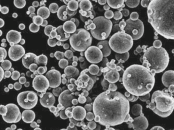
Impedance of LiFe0.4Mn0.6PO4 Electrodes with Combined Conducting Polymer Binder of PEDOT:PSS and Carboxymethyl Cellulose
The paper authored by R.V. Apraksin, S.N. Eliseeva, M.A. Kamenskii, E.G. Tolstopyatova,
G.G. Láng and V.V. Kondrat’ev
is published in Russian Journal of Electrochemistry (2019, vol. 55, pp. 1047–1057).
Abstract:
This work studies the electrochemical properties of cathodic materials for lithium–ion batteries based on mixed lithium–iron–manganese phosphate LiFe0.4Mn0.6PO4 (LFMP) obtained using a conducting binder containing poly-3,4-ethylenedioxythiophene : polystyrenesulfonate (PEDOT:PSS) and carboxymethyl cellulose (CMC). The results are compared with those for the material based on LiFe0.4Mn0.6PO4 manufactured with the conventional polyvinylidene fluoride (PVDF) binder. The electrode material with the PEDOT:PSS/CMC binder manifests enhanced functional characteristics as compared to electrodes with the conventional binder. It is found that replacement of the conventional binder by the combined conducting PEDOT:PSS/CMC binder in the LFMP-based cathodic material results in an increase in the specific capacity of the cathodic material. Particularly noticeable advantages of the material with respect to specific capacity are observed at high currents (up to 10 C), which can be explained by the increasing rate of the processes of material recharge due to a significant decrease in the charge transfer resistance and an increase in the apparent diffusion coefficient of the lithium ions.
